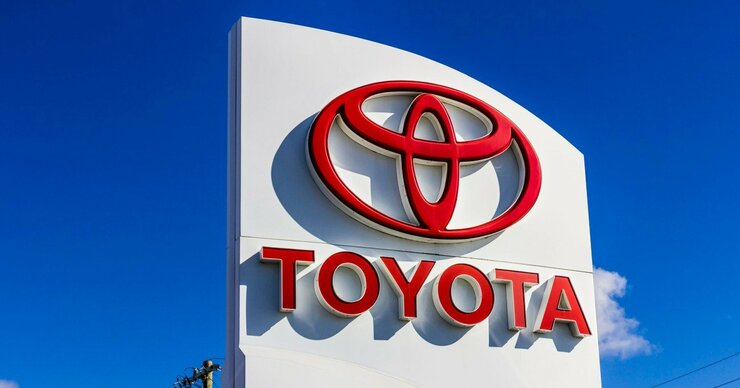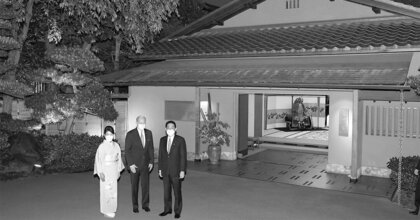Originally published in Japanese on Jun. 6, 2022
Fall from grace
Nissan has only itself to blame for its fall from grace.
That was how Kenji Shimotsu, the presiding judge in the March trial of former Nissan Chairman Carlos Ghosn, summarized the “Ghosn scandal.” Ghosn was arrested in November 2018 on allegations of misrepresenting his remuneration in annual securities reports.
Greg Kelly, a former Nissan director accused of complicity, was sentenced to prison for six months with a three-year suspended sentence. Prosecutors had sought a two-year prison term. The court agreed to the prosecution’s request to fine Nissan 200 million yen ($1.5 million).
The Tokyo District Court also found that the principal offender in the affair was Ghosn, who escaped from Japan and is currently on the international wanted list. However, the court also took Nissan to task, noting that Ghosn’s crime was only possible because of the company’s poor corporate governance.
A company’s governance is the responsibility of its board of directors, and Shimotsu effectively said that Nissan’s board was largely to blame for enabling the wrongdoings of Ghosn and his close associates.
Even before its reprimand in court, Nissan had overhauled its governance structure from the days of Ghosn, including the creation of a nominating committee after its general shareholders' meeting in June 2019. The company currently appoints seven of its 12 directors from outside the company to ensure Nissan’s management is strictly supervised.
Some of these outside directors, however, have not had the impact reformers had expected. Three outside directors, all of whom share one important characteristic, are conspicuous in their disregard for the risks facing Nissan and their focus on their own station.
Suing in self-defense
On January 19, Nissan lodged a civil complaint against Kelly in the Yokohama District Court, demanding 1.4 billion yen in compensation for damages caused by his breach of duty when he was an executive at the company. Motoo Nagai, a 68-year-old outside director and head of Nissan’s audit committee, is said to be the driving force behind the litigation.
A number of Nissan executives opposed the lawsuit against Kelly, worrying that a trial would incur considerable litigation costs and focus public attention on the company’s embarrassing scandal. The lawsuit had little point, they argued, and it posed considerable risks. Nagai, however, was undeterred and pushed forward.
Some within Nissan noted that if Kelly was not held responsible in court, Nagai himself could face shareholders’ ire as the head of the audit committee. In their thinking, he pushed for the lawsuit to forestall such a scenario.
Nagai joined the former Industrial Bank of Japan, Nissan’s main financier, and before assuming his current position he was deputy president of Mizuho Trust & Banking. A former director criticized him as “a typical Japanese megabank worker lagging in terms of internationalization. He’s a marudome who has no knowledge whatsoever about the management of a global company.” Marudome is a piece of slang from Japan’s business world used to ridicule those know only about the work environment in Japan.
But Nagai is not the only outside director to prioritize their own interests over making rational decisions for the company and providing shareholders and employees with accountability. This is best seen in the retirement bonuses paid to directors. According to the annual securities report published on July 6, 2020, Hiroto Saikawa, the former CEO who retired as a director in February 2020, was paid a total remuneration of 412 million yen. Yasuhiro Yamauchi, who served as interim CEO after Saikawa stepped down as top executive in September 2019 and himself also left in February 2020, received 419 million yen.
Nissan posted a deficit of 671.2 billion yen for the fiscal year ending March 2020 and it was forced to suspend dividend payments. In light of that, the massive retirement bonuses to Saikawa and Yamauchi seem questionable. But the details of the bonus payments offer further insight.
Saikawa’s annual base salary was 98 million yen, and his retirement bonus, categorized as “remuneration at the time of retirement,” was 200 million yen. He received an additional 114 million yen as a separate retirement bonus under a system that has since been abolished. Yamauchi’s base salary was 46 million yen, and he received a retirement bonus of 304 million yen and 69 million yen in other remunerations.
Nissan’s main system for retirement bonuses was discontinued in 2007, but it was brought back in this instance — despite the company’s poor performance — under the heading of “remuneration at the time of retirement.”
Yamauchi, who led the company for a shorter time than Saikawa, received 104 million more in retirement bonuses. It is also noteworthy than an interim CEO received more compensation than a proper CEO.
Favoritism and neglect
The return of the retirement bonus system was the work of 49-year-old Keiko Ihara, outside director and chair of the remuneration committee, who also wielded significant influence over the size of the compensation packages. Ihara, a race car driver, served as a member of the Industrial Structure Council in the Ministry of Economy, Trade and Industry, and she now is Project Professor of the Graduate School of Media Design at Keio University.
After Saikawa stepped down as CEO over issues regarding his own pay, the 6-person nominating committee was split over his replacement. Three members backed Jun Seki, currently the president of Nidec, who was then Nissan’s vice chief operating officer (COO), and two supported Ashwani Gupta, now the Nissan’s COO, who was at the time COO of Mitsubishi Motors. Ihara, the remaining committee member, said that interim CEO Yamauchi should take the top spot on a permanent basis.
It is little wonder that Ihara, the “pro-Yamauchi” member, would come under scrutiny for increasing the size of the retirement package for someone close to her.
As the nomination committee grappled with who would replace Saikawa, Seki was close to emerging as the preferred candidate. However, Jean-Dominique Senard, chairman of French automaker and Nissan ally and shareholder Renault, was opposed to the idea of Seki as CEO. After a series of twists and turns, Makoto Uchida was chosen to lead the Japanese automaker.
The selection process was led by 72-year-old Masakazu Toyoda, lead independent outside director and chair of the nominating committee. Toyoda, formerly a high-ranking official at METI, yielded to Senard’s opposition to Seki without notable resistance, sending the search for the next CEO back to square one.
Some executives within Nissan were not pleased. “Naturally there’s pressure from the top shareholder, but Mr. Toyoda was too indecisive.”
Toyoda has served as an outside director for Canon Electronics since 2015 and for Murata Manufacturing since 2016. He also took on the role of outside auditor for Nitto Denko Corporation. Some have noted that his schedule is too full to adequately handle his duties at Nissan.
In some cases, Nissan’s outside directors appear to be hindering reform while the executive leadership has been trying to improve governance. In fact, three of the seven outside directors have held their positions since Ghosn’s time as the top executive: Nagai, Ihara, and Toyoda.

A former Nissan executive said that Ghosn, who had final authority over the company at the time, “said not to appoint any outside directors who make critical remarks.” It is clear that while Nissan has only itself to blame for its troubles, much of the fault lies with the outside directors who head the company’s three major committees.
(Originally written in Japanese by Hisao Inoue, translated into English by Erklaren, Inc.and edited by Connor Cislo)











